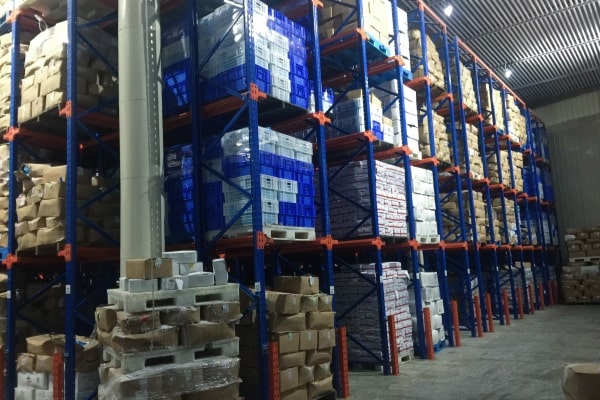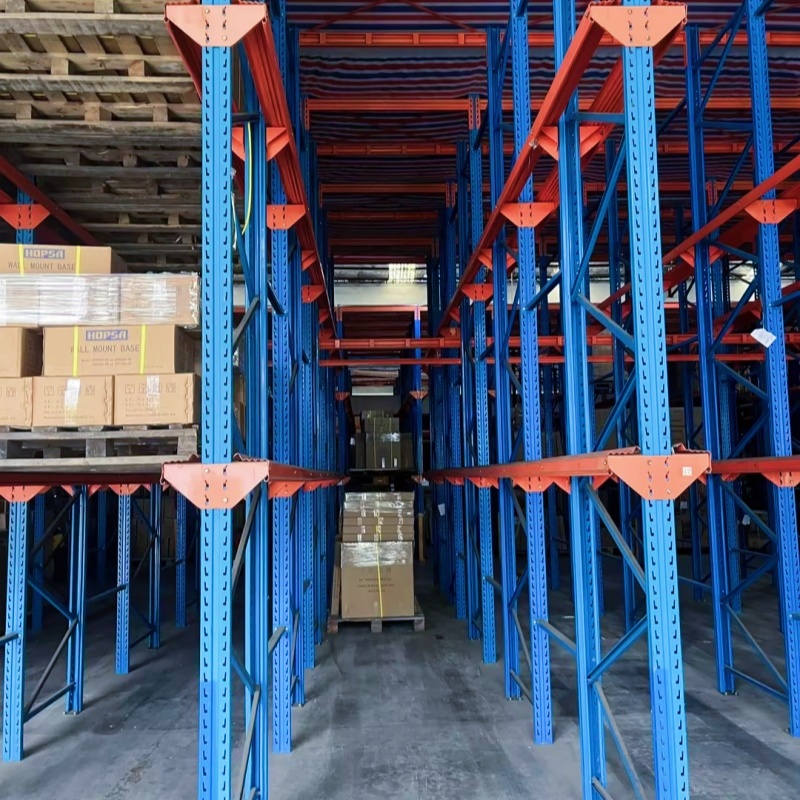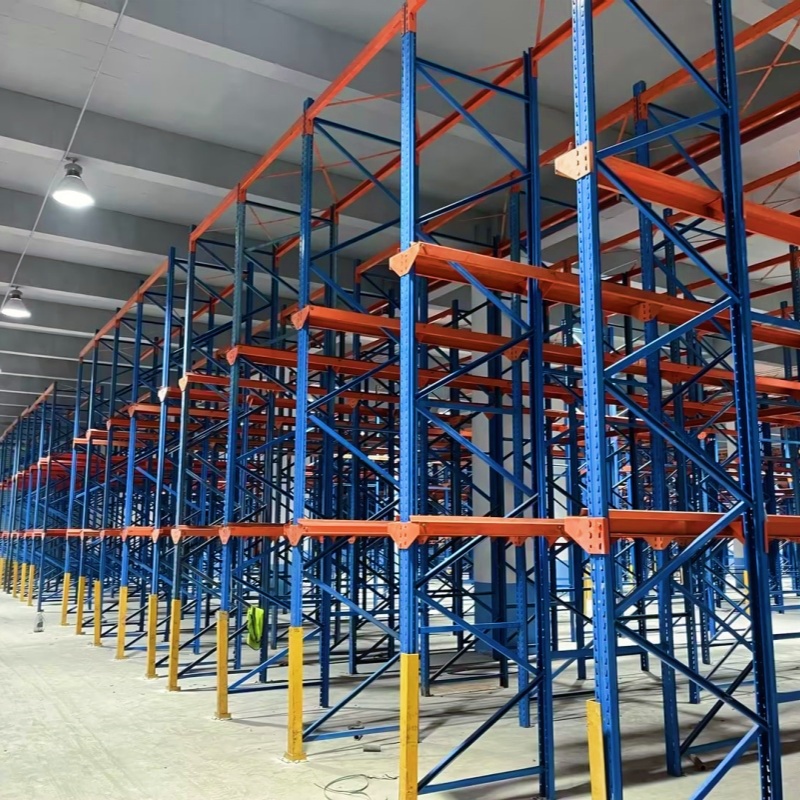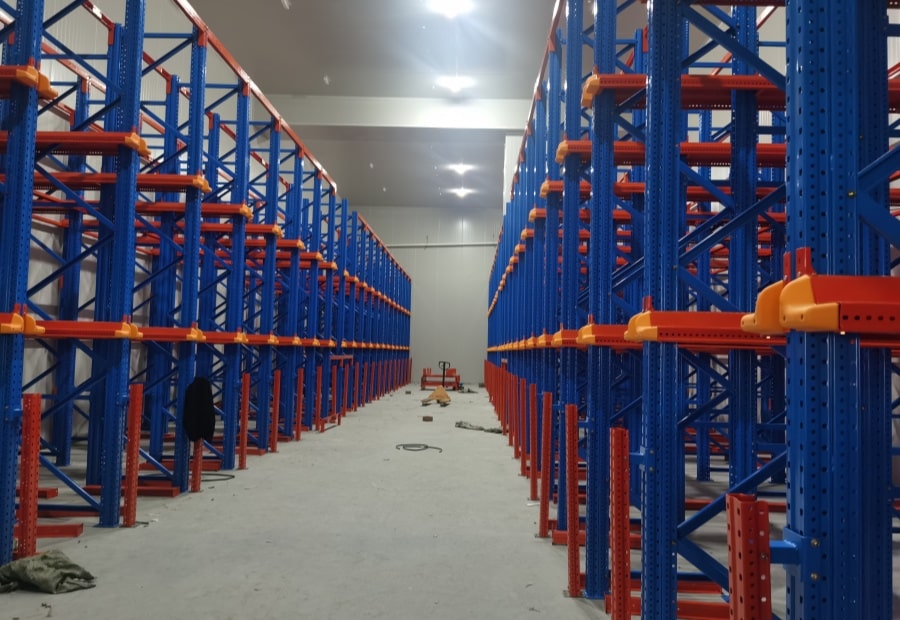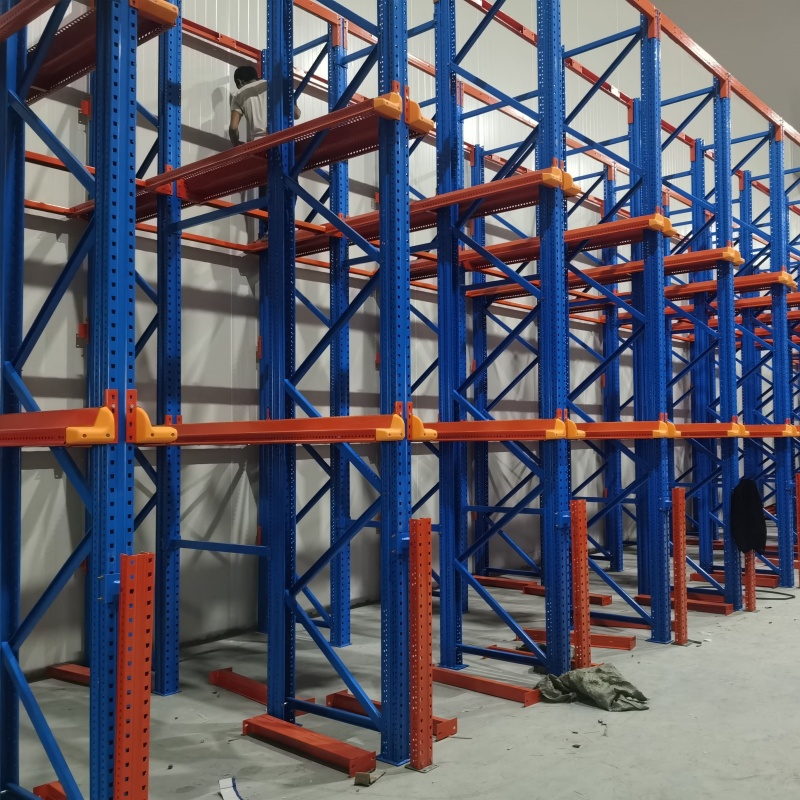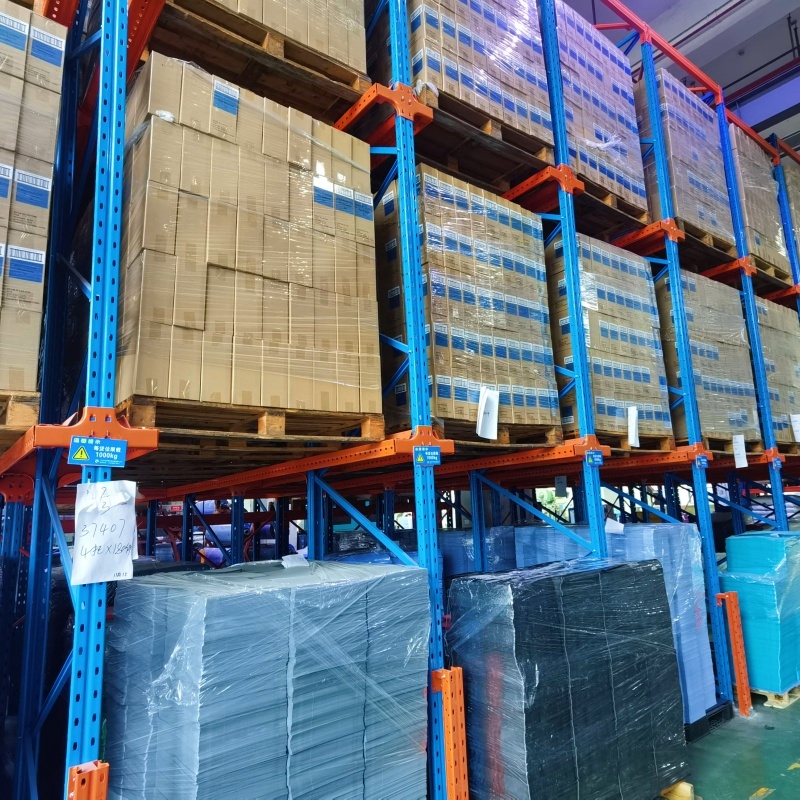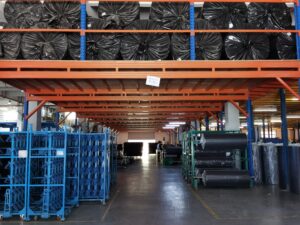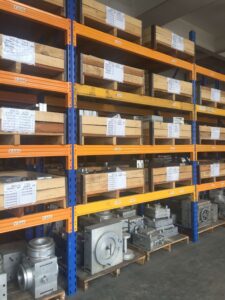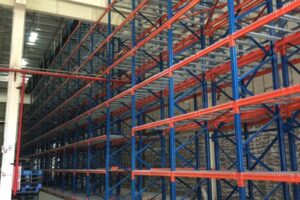I.High – Efficiency Storage: The Core Advantage of Drive – In Racking
Drive – In Racking Drive – In Racking, also known as Corridor – type Racking or Through – type Racking, is a warehousing solution specifically designed for high – density storage planning. This type of racking not only stands out in its design but also demonstrates powerful capabilities in functionality. It is typically composed of components such as uprights, beams, and specially made guide rails, forming multi – layer storage platforms. The depth of each storage channel can extend to several pallet depths. Pallets are directly placed on the beams and stored layer by layer along the guide rails in the channel, one adjacent to another. This integral structure not only has extremely high stability after installation, being able to withstand various dynamic loads within the warehouse, but also greatly improves space utilization. The most prominent feature of Drive – In Racking lies in its high – efficiency storage capacity. It allows forklifts to directly drive into the interior of the racking for storage and retrieval operations, eliminating the need to reserve separate aisles between each row of racks. This design maximizes the use of storage space. Compared with traditional racks, it can increase the space utilization rate of the warehouse by over 50%. Meanwhile, the racking supports deep – storage. Multiple storage levels can be set on both sides of each channel to adapt to goods of different sizes. By adjusting the height of the beams, a large number of similar goods can be stored, meeting diverse storage requirements.
II. The Representative of High – Density Storage: The Classification of Drive – In Racking
So, what type does drive – in racking belong to? The answer is clearly the high – density storage racking type. By eliminating or reducing the aisle space between traditional racks, it achieves high – density storage. This design not only reduces the number of racks and aisle space, thus lowering the initial investment cost and long – term operating cost, but also reduces the need for warehouse expansion or renting new warehouses due to insufficient space.
In addition to high – efficiency storage, drive – in racking brings many other advantages. It allows for flexible adjustments according to actual needs, such as increasing or decreasing the number of rack layers and adjusting the rack layout. This provides great convenience for enterprises, enabling them to quickly adjust their warehousing strategies according to business changes. Meanwhile, drive – in racking is suitable for both First – In – First – Out (FIFO) and Last – In – First – Out (LIFO) storage methods, which can be flexibly selected according to the characteristics and requirements of the goods.
III. A Practitioner of Green Storage: The Environmental Contributions of Drive – In Racking
Drive – in racking, with its unique concept of green storage, is triggering a revolution in the warehousing industry. By maximizing the use of storage space, reducing resource waste, and lowering energy consumption in operating costs, drive – in racking not only meets enterprises’ needs for efficient warehousing but also aligns with the current society’s pursuit of green and sustainable development. This storage solution that combines efficiency and environmental protection is gradually becoming a key tool for enterprises to achieve green warehousing and promote sustainable development.
Drive – in racking achieves green warehousing mainly through the following approaches: Firstly, with its compact layout design, it eliminates or significantly reduces the aisle space between traditional racks, enabling every square meter of space to be fully utilized. This effectively reduces the occupation of land resources. Secondly, the First – In – First – Out (FIFO) or Last – In – First – Out (LIFO) storage methods of drive – in racking ensure the orderly management and rapid circulation of goods, reducing inventory backlog and expiration losses, and further saving resources. Moreover, this racking design simplifies the warehousing operation process, reducing the reliance on manpower and energy, and thus reducing carbon emissions during operation. In conclusion, drive – in racking, with its scientific layout, efficient storage methods, and environmentally – friendly operation concept, provides strong support for enterprises’ green warehousing transformation.
In the journey of green warehousing, Storlogi’s drive-in racking is undoubtedly a reliable partner for enterprises. With practical environmental protection measures, it injects strong impetus into the sustainable development of the warehousing industry. By virtue of its ingenious planning of storage space, innovative application of storage methods, and in-depth practice of environmentally friendly operation, Storlogi’s drive-in racking is assisting numerous enterprises in achieving efficient warehousing while actively fulfilling their social responsibilities and moving towards a green future. It is believed that with Storlogi’s continuous technological innovation and product optimization, the drive-in racking will exert greater value in more fields and lead the warehousing industry to keep advancing in the direction of being green and efficient.ns.
 StorLogi
StorLogi
